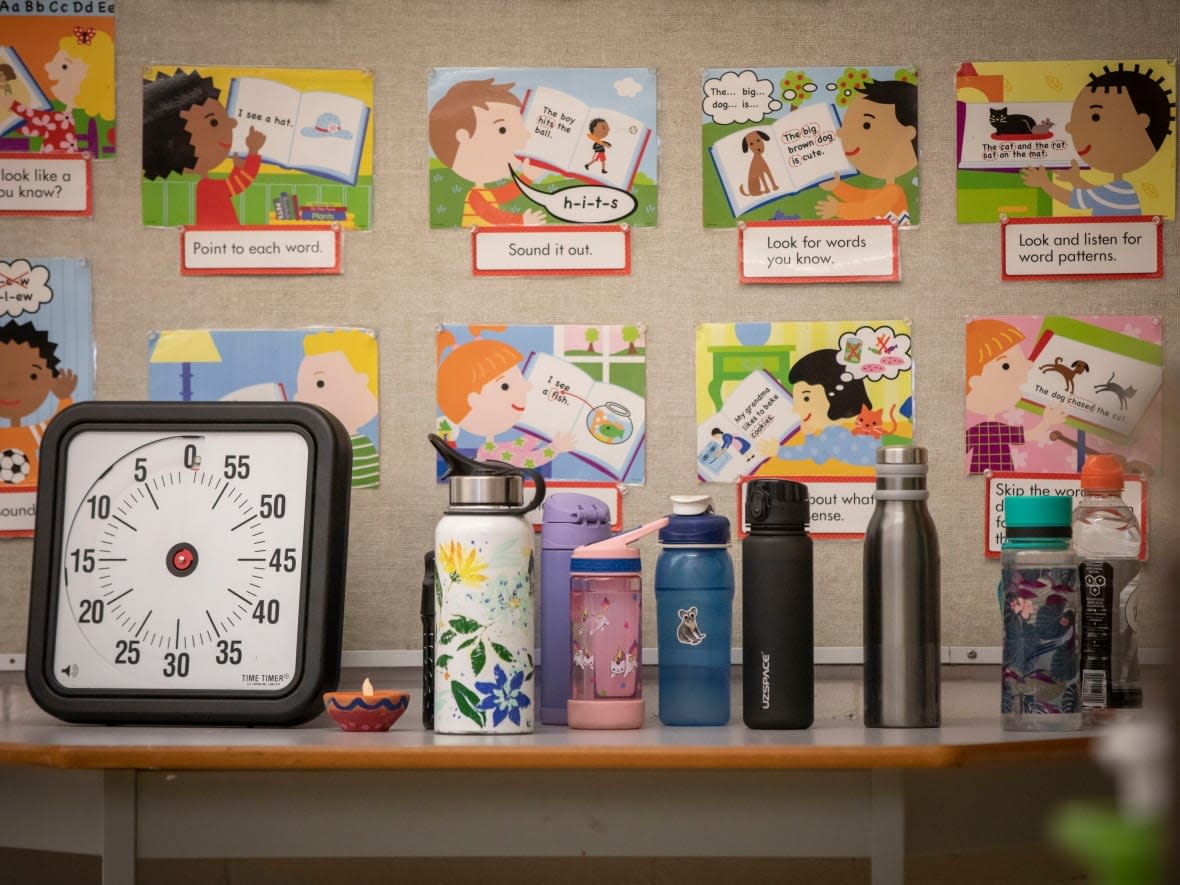Sask. teacher strikes have made 'class complexity' a hot topic. How might it affect your local school?

Amid strained contract negotiations between the Saskatchewan government and the province's teachers, along with rotating strikes and other labour action since January, a phrase from education circles has surfaced among the general public: classroom complexity.
It speaks to a reality in schools today — classes of students with a wide spectrum of abilities and needs. Some pupils require learning supports that aren't necessarily or readily accessible — and that can affect the experience of everyone in the classroom.
What does a complex class look like?
No class has a homogenous group of kids, but the makeup of students learning together in classes today is significantly more diverse than in previous generations, according to Regina high school teacher Peggy Welter.
"We see kids who have speech issues. We see kids with learning issues, students who struggle with behaviour … some of them barely able to sit through five minutes of a class," Welter told CBC Radio's The Current this week.
"We have kids who are unable to physically do the work due to [struggles with] gross motor skills or fine motor skills... Students who are EAL (English as an additional language) students or refugees, who come with their own sets of issues. And then we have mental health issues on top of that."
THE CURRENT | Supporting students with complex needs in inclusive classrooms:
Faced with this wide range, teachers simply don't have enough time, resources or support to help students learn effectively, according to Welter, who is also a member of the Saskatchewan Teachers' Federation executive. She said classrooms become "utterly chaotic," negatively impacting every student and leaving educators stretched beyond their limits.
"If you have students who have serious behavioural issues, that can make it nearly impossible to even get through a lesson. If you have children with mental health issues, you see a lot of students just sitting there and shutting down," she noted.
"Students who would otherwise be asking a question — just to get clarification — may not even have the opportunity to do so … and then their needs aren't getting met."
What's behind this classroom mix?
March marks the 30th anniversary of a global, UNESCO-hosted conference that resulted in a landmark statement championing inclusive education, under the guiding principle that schools should accommodate all children — regardless of physical, intellectual, emotional or other challenges — within regular education systems. That's a contrast to approaches such as segregated special education classes and facilities.
Canada was among the more than 90 countries that signed the Salamanca Statement and, while education is a provincial responsibility, each has generally accepted the philosophy. Yet it's been implemented differently in different places. The New Brunswick approach, for instance, is to almost exclusively integrate all students in regular or mainstream classes. In Ontario, on the other hand, some children with disabilities learn in separate environments.
WATCH | Why schools have shifted to inclusion for students with disabilities:
Inclusive education means moving away from the idea "we have one way to teach kids and hopefully they fit in there somehow" to an approach where "we're trying to help all students be able to engage with the curriculum," said Jacqueline Specht, director of the Canadian Research Centre on Inclusive Education and a professor at Western University in London, Ont.
"Everybody has the right to be educated, and we have to look at how we do that," she said.

What kind of supports go into inclusive classrooms?
To teach students that have a range of learning needs, educators need training. They also need access to a range of supports and resources, experts say. That might mean, for instance, an educational assistant or other staffers with a specialized skill set joining their classroom. It could also mean procuring learning aids for the students who need them: a tablet with special software, for instance, or manipulatives for learning math.
Classroom teachers might also need time to consult with peers on best practices or greater latitude to implement new approaches.
"Transformative leadership is supporting the teachers, what they need and them knowing that you have their back," Specht said.
"When [education] ministries are saying, 'We want you to do X, but we're not really going to support that,' it doesn't give a good message to our school boards, to our schools, to our teachers."
In Saskatchewan, for instance, teachers want to see class complexity addressed in a new collective agreement, as it is in other provinces. But the government disagrees, saying complexity is an issue to be dealt with at the local school division level and declined the Saskatchewan Teachers' Federation's request to enter binding arbitration over the issue.
Are schools equipped for inclusive education?
If school districts transition away from special ed classrooms without adequately preparing for the needs of newly integrated ones, that's another issue, according to Monique Somma, an assistant professor in the department of educational studies at Brock University in St. Catharines, Ont.
In particular, school boards need to remain committed to keeping up with supports for students, she said.
"Over time, that funding gets moved elsewhere and dispersed into other things," Somma explained.
Inclusion education has become a moral imperative for Canadian education systems, says educational consultant Cathy Montreuil. But with classroom complexity a hotly debated topic for educators and families in every province, she also believes we're at a tipping point.
"The inclusion policies are not wrong. What happened was they were set and landed in systems that didn't change, and so that's a recipe for failure," said Montreuil, a former teacher, administrator and special education expert who has also served as Ontario's assistant deputy education minister and, more recently, Nova Scotia's deputy education minister.
Society has always had high expectations of teachers, but "we're reaching a point where it's unfair to ask the teacher to know all and be all and do all," she said.
What would help teachers tackle complex classrooms?
Montreuil believes systemic change is needed at multiple levels to improve inclusive education in Canada — in schools and boards, at teacher's colleges, and within education ministries.
Instead of "discrete classrooms, with a teacher responsible for everything," for instance, she advocates a more multidisciplinary, team-based approach, which is a shift in thinking and workflow.
Educators should also communicate with and potentially tap into the expertise of parents and community members, she added.
WATCH | Changes in training, implementation needed to improve inclusive classes:
Colleges and universities must teach everyone studying to be educators and education-related professionals to deal with the reality of complex classrooms and how to co-ordinate their efforts, according to Montreuil.
She also wants to see faculties of education work with teacher unions to explore success stories and share "what really works and [create] some demonstration schools and classrooms, so that we can learn from one another versus struggle alongside one another."
Provinces should continue funding more inclusive education supports, Montreuil continued, but must also monitor and guide implementation of the overall policy. Provinces must "stop asking individual school regions or systems to solve this by themselves," she said.
At the heart of inclusive education is the belief that every child has a right to education, noted Specht, the Western University professor.
"If we believe truly in the fact that everybody has the right to exist in society and belong to society, then we need to start that within our school systems."

 Yahoo News
Yahoo News 
